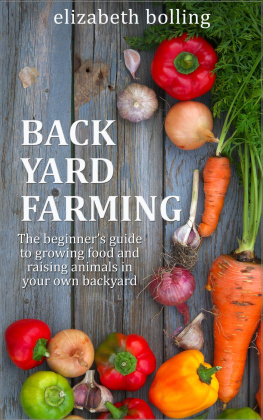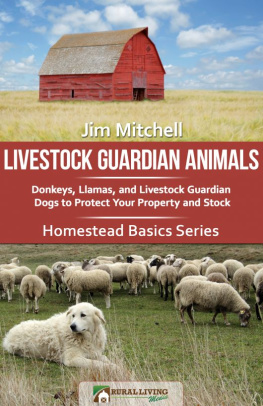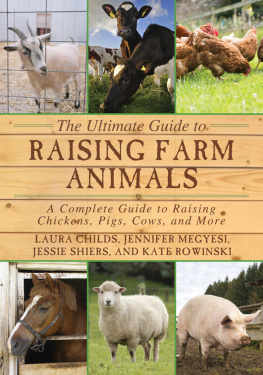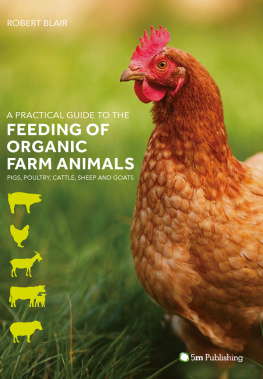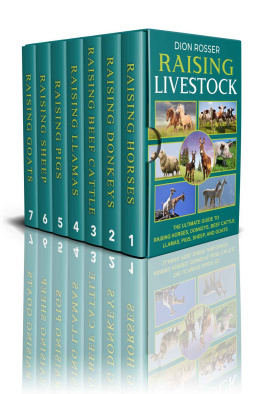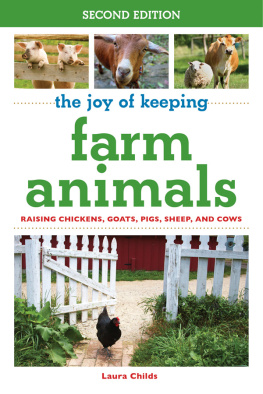
Copyright 2017, 2007, 1990, 1976 by
Steven Thomas and George P. Looby
All rights reserved
COVER PHOTOGRAPH georgeclerk/iStockphoto.com
For information about permission to reproduce selections from this book, write to Permissions, The Countryman Press, 500 Fifth Avenue, New York, NY 10110
For information about special discounts for bulk purchases, please contact W. W. Norton Special Sales at specialsales@wwnorton.com or 800-233-4830
THE COUNTRYMAN PRESS
www.countrymanpress.com
A division of W. W. Norton & Company, Inc. 500 Fifth Avenue, New York, NY 10110 www.wwnorton.com
978-1-68268-086-5 (pbk.)
978-1-68268-087-2 (e-book)
Photo Credits
Page 6: georgeclerk/iStockphoto.com; 8: HadelProductions/iStockphoto.com; 11: vesmil/iStockphoto.com; 14: jackritw/iStockphoto.com; 26: nikidavison/iStockphoto.com; 30: mira33/iStockphoto.com; 31: pets2and2/iStockphoto.com; 34: cjp/iStockphoto.com; 37: chameleonseye/iStockphoto.com; 42: ly-ly/iStockphoto.com; 47: vzmaze/iStockphoto.com; 54: chuckcollier/iStockphoto.com; georgeclerk/iStockphoto.com; 59: mansum008/iStockphoto.com; 62: trangiap/iStockphoto.com; 60: bbbrrn/iStockphoto.com; 67: Mike Stancombe/iStockphoto.com; 75: Eremeychuk Leonid/iStockphoto.com; 80: Molotok743/iStockphoto.com; 96: flowersandclassicalmusic/iStockphoto.com; 108: BackyardProduction/iStockphoto.com; 113: percds/iStockphoto.com; 116: JohnCarnemolla/iStockphoto.com; 118: patrickjoseph1/iStockphoto.com; 131: Sevaljevic/iStockphoto.com; 146: PavelKriuchkov/iStockphoto.com; 151: brandtbolding/iStockphoto.com; 152: Stieglitz/iStockphoto.com; 161: alinalina/iStockphoto.com; 166: rachaelrussell/iStockphoto.com; 172: Grigorev_Vladimir/iStockphoto.com; 178: lonewolfshome/iStockphoto.com; 192: ngaga35/iStockphoto.com; 195: 2ndLookGraphics/iStockphoto.com; 197: Hillview1/iStockphoto.com; 200 narvikk/iStockphoto.com; 211: ghornephoto/iStockphoto.com; 213: sonsam/iStockphoto.com; 220: aon168/iStockphoto.com; 225: jesiotr9/iStockphoto.com
Discontent is the want of self-reliance.
Ralph Waldo Emerson

For Meme, who fed the animals while
I wrote about them and without whom
none of this would be fun.
and
For Peter and Jane Jennison, for all
their help and encouragement over the
years and for their friendship.
Steven Thomas

CONTENTS

Change is inevitable. Sometimes it occurs at a leisurely pace, and sometimes it is frantic. In certain fields of endeavor it is almost impossible to stay current, the changes occurring with lightning speed. For those of us involved in any level of animal agriculture, change tends to take place at a more comfortable pace. But changes do occur. Almost ten years have passed since the last edition of Backyard Livestock, and changes have occurred, some for the better and some that remain to be evaluated.
In the years since the third edition was published, organic farming has grown in importance to become a major contributor to the nations food supply. Many consumers have developed a strong preference for organically grown produce of all kinds. On a seasonal basis, farmers markets have become an increasingly important source of food for those communities that they serve. The demand for land continues to be tight, especially in the northeast, and no longer is the housing market primarily driving the demand. Solar energy is now considered an important contributor. The producers of solar energy clear parcels of land on which to construct their facilities, posing an additional threat to prime agricultural land, of which there is a finite amount. It is time for the appropriate regulatory agencies to sit down and draw up a master plan that will address the needs of all concerned parties. Genetically modified organisms (GMOs) are also a major source of concern to many consumers, even though the leading scientists involved in their development assure us that there is no cause for alarm. Safe to say that the jury is still out on this one.
Global warming and all of its negative impacts must be monitored carefully, and those who have doubts about its existence need to study the evidence more carefully. It seems that many issues have been at least partially resolved, but Mother Nature is somewhat devious and we must be prepared for her next moveand we certainly must not contribute in any way to whatever tricks she may have up her sleeve.
As we worked our way through this revision, every attempt was made to retain as much of the original authors observations and recommendations as possible. Most of his comments are as true today as they were when written forty years ago. The good stuff doesnt change. When perusing this book, the reader will occasionally find the pronoun we when making a comment. That is Steve Thomas talking, not George Looby. Please feel free to correspond with us if you have corrections, omissions, or additions that you might want to address.
It is my strong hope that the material presented in this book proves to be worthwhile to you. Its purpose is to provide a quick and easy guide to some of the more common situations encountered in a modest start-up livestock operation. The material is based on the authors lifetime of experience in animal agriculture, some right, and some not so rightbut if we can help you avoid even one pitfall along the way, we will have achieved our goal.
A Review of Current Topics in Animal Agriculture
The following section is designed to give the reader an overview of some the evolving issues that have surfaced since last we went to press. It is not designed to be an in-depth review of any of the topics, but rather to make the reader aware of their relevance in todays agricultural environment. Youll need to do further reading if you wish to expand your level of knowledge regarding any of these topics. It is likely that one or more of them would make another book!
GRAZING
Grazing is among the oldest and most efficient ways to convert grass into beef, and wool into textiles, but it is not always the easiest to accomplish. Land prices have soared as competition for land has intensified. Urban and suburban sprawl has made the ways in which land is used and managed very competitive. Small landholders who own modest farmsteads have been pressured by developers to sell their properties for inflated amounts in order to satisfy the apparently endless demand for housing in the suburbs and beyond. The tentacles of development reach out farther and farther, and the end is nowhere in sight.
The pressures cited above and others put increasing demand on land that previously might have been used for grazing. How long, you might ask, would it take for a few sheep or beef cattle to give the same rate of return as a few acres sold to a developer for a large sum? The harsh reality is that, once gone, grazing land can never return, but the old adage about land being the ideal investment has never been truer that it is in todays real estate market. After all these years, Will Rogers is still right.
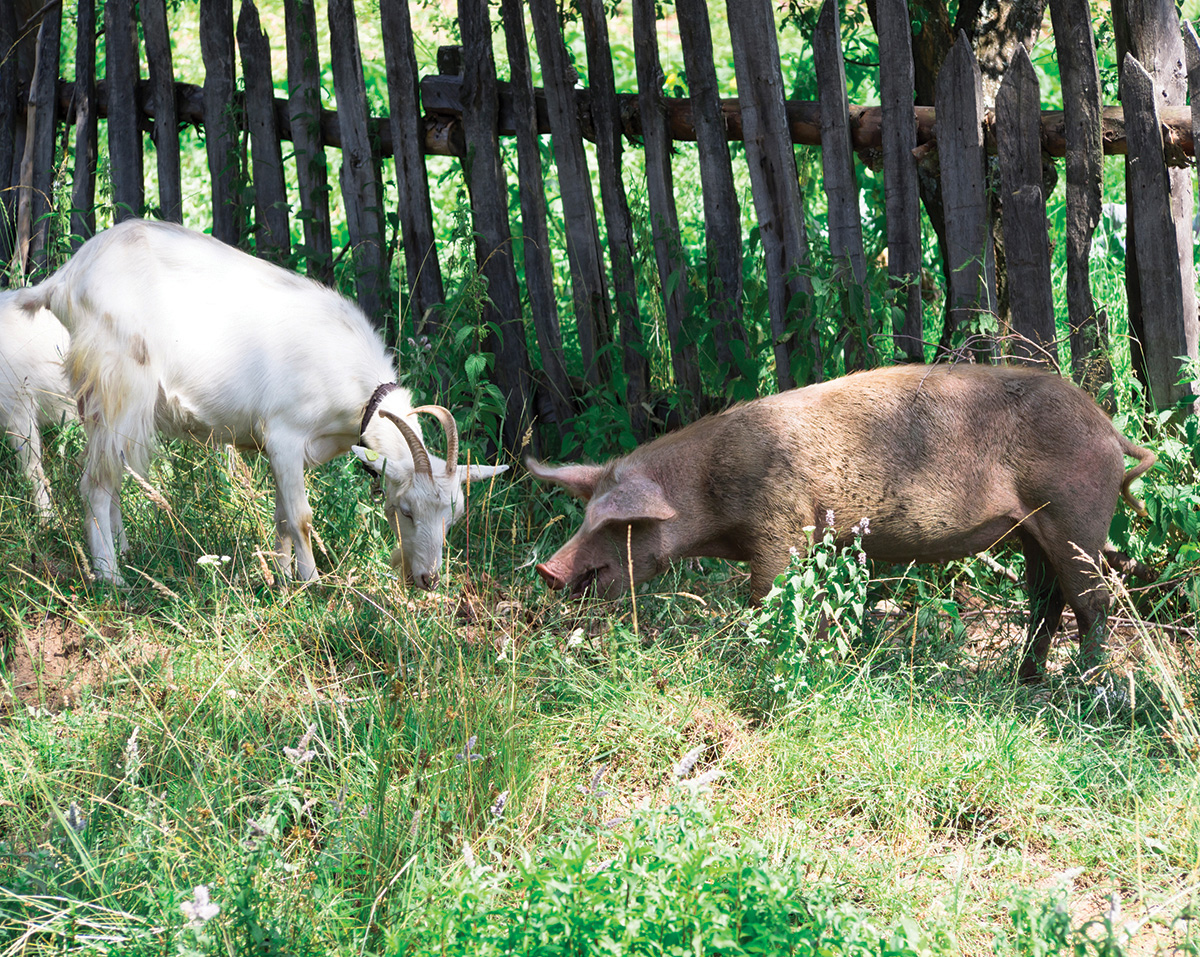
Next page

